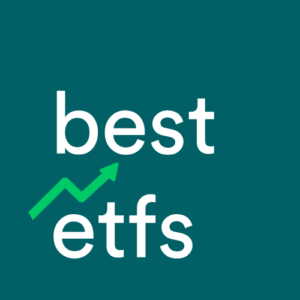Is the National Australia Bank Ltd (ASX:NAB) share price now cheap, fairly valued, really overvalued… or something else?
No-one can tell you for sure whether now is the perfect time to buy.
In the short run, the share market can seem like a random place. It can be up 3% one day, down 4% the next. There’s often no rhyme or reason (although pundits are paid the big bucks for the evening news to make you think they have a crystal ball).
In this short article we’ll go step-by-step through two key valuation tools you can use to value a share like NAB or even Westpac Banking Corp (ASX:WBC) and ANZ Banking Group (ASX:ANZ).
Before that though, it’s worth mentioning why bank shares are so tempting right now (and they’ve been popular since the early 1990s). The answer is surprisingly simple: falling interest rates and a recession-less economy (until 2020, of course). In the early 90s, Australia began a once-in-a-generation unwinding of interest rates. Rates fell from over 15% to near zero by 2020. Banks, with their exposure to property prices, more savings and, of course, more household debt, were the obvious beneficiary of this structural trend.
Keep in mind bank shares are not without their risks, and nothing is ever gauranteed in the stock market. What’s more, bank shares like NAB or WBC often appear undervalued, at least on a PE basis, since they are highly regulated, tend to experience slower profit growth, pay more of their profit in dividends and are typically ‘mature’ businesses.
PE sector valuations
The price-earnings ratio or ‘PER’ compares a company’s share price (P) to its most recent full-year earnings per share (E). Remember, ‘earnings’ is just another word for profit. Hence, the ‘P/E’ ratio is simply comparing share price to the most recent full-year profit of the company. Some experts will try to tell you that ‘the lower PE ratio is better’ because it means the share price is ‘low’ relative to the profits produced by the company. However, sometimes shares are cheap for a reason!
Secondly, some extremely successful companies have gone for many years (a decade or more) and never reported an accounting profit — so the PE ratio wouldn’t have worked.
Therefore, we think it’s very important to dig deeper than just looking at the PE ratio and thinking to yourself ‘if it’s below 10x, I’ll buy it’.
One of the simple ratio models analysts use to value a bank share is to compare the PE ratio of the bank/share you’re looking at with its peer group or competitors and try to determine if the share is over-valued or under-valued relative to the average. From there, and using the principle of mean reversion, we can multiply the profits/earnings per share by the sector average (E x sector PE) to reflect what an average company would be worth. It’s like saying, ‘if all of the other stocks are priced at ‘X’, this one should be too’.
Using NAB’s share price today, together with the earnings per share data from its 2020 financial year, we can calculate the company’s PE ratio to be 32.5x. That compares to the banking sector average PE of 24x.
Reversing the logic here, we can take the profits per share (EPS) ($0.805) and multiply it by the ‘mean average’ valuation for NAB. This results in a ‘sector-adjusted’ share valuation of $19.39.
Dividend modeling (a basics walkthrough)
The dividend discount model or DDM is different from ratio valuation like PE because the model makes forecasts into the future, and uses dividends instead of profit. Because the banking sector has proven to be relatively stable with regards to share dividends, the DDM approach can be used. However, we would not use this model for, say, technology shares.
Basically, we need only one input into a DDM model: dividends per share. Then, we make some assumptions about the yearly growth of the dividend (e.g. 2%) and the risk level of the dividend payment (e.g. 7%). We’ve used the most recent full year dividends (e.g. from last 12 months or LTM) then assumed the dividends remain consistent but grow slightly.
For simplicity, let’s assume last year’s dividend payments are consistent. Important warning: last year’s dividends are not always a good input to a DDM because dividends are not guaranteed since things can change quickly inside a business. So far in 2020, Australia’s Big Banks have been cutting or deferring their dividends.
To make this easy to understand, using our DDM we will assume the dividend payment grows at a consistent rate in perpetuity (i.e. forever) at a yearly rate between 2% and 3%.
Next, we have to pick a yearly ‘risk’ rate to discount the dividend payments back into today’s dollars. The higher the ‘risk’ rate, the lower the share price valuation.
We’ve used an average rate for dividend growth and a risk rate between 6% and 11%.
This simple DDM valuation of NAB shares is $11.44. However, using an ‘adjusted’ dividend payment of $1.12 per share, the valuation goes to $20.08. The valuation compares to National Australia Bank Ltd’s share price of $26.17.
Valuation + further research = best combo
Make sure you don’t forget that the two models used here are only the starting point of the process for analysing and valuing a bank share like NAB.
We think it’s good practice to read at least three years of annual reports, jot down your thoughts/research and set out your thesis/expectations based on what management is saying. Indeed, a very useful tool is studying management’s language in presentations and videos. Is the CEO or director candid? Or does he/she use lots of jargon and never answer a straight question? Finally, read articles and research from good analysts, and when you do, seek out people who disagree with you. These voices are often the most important.
These are are just a handful of the best strategies to use alongside your valuation tools to determine if you’re making a mistake — hopefully, before you make a costly mistake!



